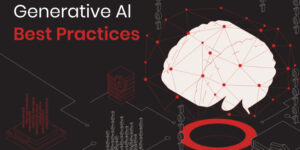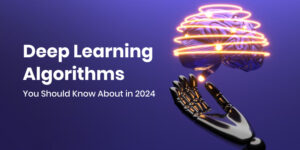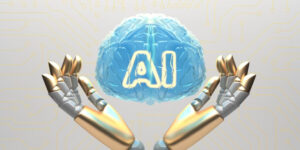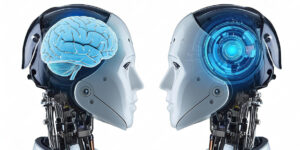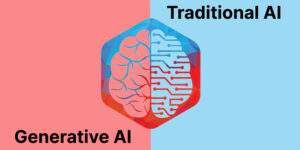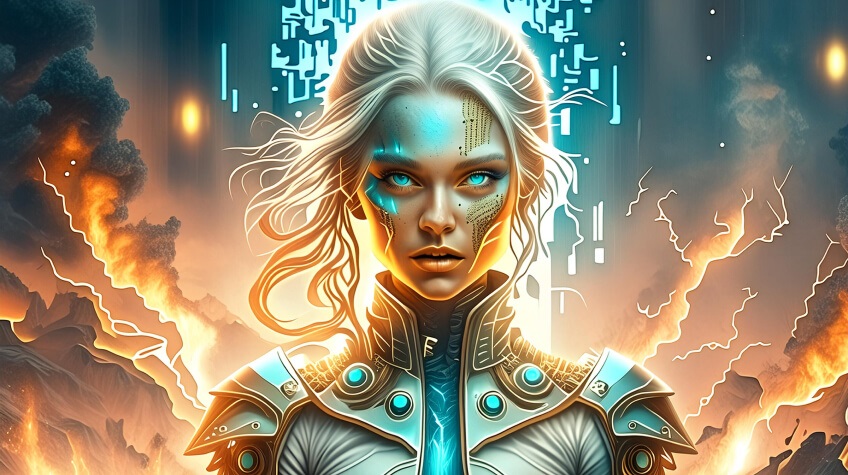
Generative AI algorithms such as Generative Adversarial Networks (GANs) for image creation have been becoming better day by day. Therefore, AI’s market size has also been exponentially rising. Its market size is projected to exceed 1.3 trillion US dollars by the year 2032. In a research study, it has been found that AI images, such as AI food images, are more alluring to people than real food images.
However, AI visuals not only enhance the attractiveness of a specific item but also foster a new culture that can be harmful in numerous ways. In this situation, it is essential to know how to detect AI-generated images. If you have been searching for information on how to spot AI-generated images, this article will help you. Here, you will learn some telltale signs or tips that will help you to spot AI images. So, read on!!
Table of Contents
- What is an AI-generated image?
- It’s Negative Effect
- Tips on How to Detect AI-generated Images
- Careful Examination of Symmetry
- Unnatural Hair
- Watch Out Hands and Limbs
- Inconsistency in Lighting and Shadows
- Flawless Textures
- Complete Perfection
- Peculiar Backgrounds
- Technical Tips on How to Detect AI-generated Images
What is an AI-generated image?
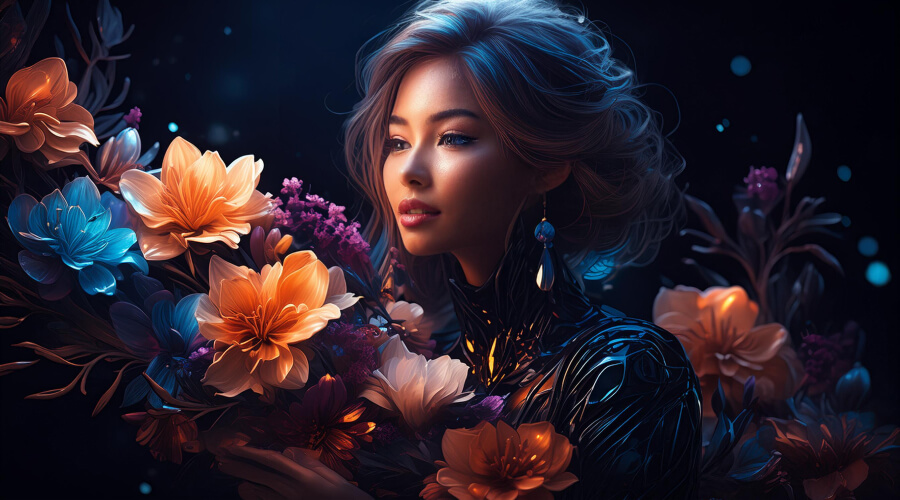
Before you delve into the following paragraphs to learn how to spot AI images, you should understand what exactly they are. As the name says, AI images are the ones that are developed by AI algorithms. These algorithms use deep learning to generate realistic images. The notable thing is that these algorithms have gained expertise in synthetic image creation by learning patterns, styles, and techniques from the pre-existing dataset. However, they do not produce clear and sharp results, just like real-world photography. That’s the reason AI-generated images are considered as fake images. These images are not up to the mark, which makes them unacceptable to promote any business, brand, or industry.
However, the thing is, many people who claim to be experts in photography have started using AI tools to generate images. Undoubtedly, this practice can be dangerous to your business. In such a situation, the first thing that comes to mind is – how to detect AI-generated images. So, if you also have the same question, then keep reading this post. We are going to share some of the best tips with you to detect the images created using AI tools.
It’s Negative Effect
AI-generated images have taken the whole internet by storm. Generative Adversarial Networks are widely accessible to use text-to-image generator features. However, it has its downsides that you can’t overlook. Let’s check out the negative effects of AI-generated images through the following pointers:
- AI-generated images can be used to create misleading content. Hence, it is essential to exercise caution while using the GANs for AI image creation.
- AI food images can increase “visual hunters” among consumers. This is because AI technology can enhance the size of whipped cream to a dessert or drink in images. This may encourage consumers, especially children, to adopt unhealthy eating habits.
- Some digital crooks can use public images to create AI-generated images. This may increase the incidents of privacy infringement or copyright violation.
- Anyone can access AI technology to create images. More than we can imagine, its corrupt usage is possible. Crafty-minded people can generate AI images that closely resemble real people without their consent, spoiling anyone’s career, personal relationships, and social image.
Hopefully, you understood the adverse impact of AI-generated images. Let’s now take a look at the tips to determine whether the image is real or AI-generated. Here we go…
Tips on How to Detect AI-generated Images
If you are looking for how to spot fake AI images, here are the following tips that you should know:
1. Careful Examination of Symmetry
First things first, scrutinize the symmetry. In the real world, you will find objects in certain pairs or groups. But, AI algorithms work according to mechanical databases. Therefore, it is quite natural to find mismatches in them. When you come across an AI-generated image, you should carefully examine its symmetry.
State-of-the-art technology certainly leaves a mismatch or unusual proportion that you can easily spot. So, watch out for the mismatch carefully. For instance, you can find earrings and cutlery in the same group.
2. Unnatural Hair
AI tools have been becoming better day by day but they have their limitations in several places. You can’t expect everything to be natural and flawless in AI images. Analyze natural human hair with AI-generated hair. You will see that human hair strands are glossy and flow from the head down. Conversely, AI hair strands are unnatural. They are devoid of glossiness and flow from the head down. They look painted.
3. Watch Out Hands and Limbs
Surplus limbs, unusual features, and mismatch patterns are the common indicators that show that the image has been created using AI technology. However, AI technology could be used for both creating a complete image or making edits. So, if you find six fingers or missing fingers in human hands, it means that the use of AI is there. Similarly, you should pay attention to figures that are in the background. The surplus of legs, slinging arms, or gnarled hands hints at AI-generated elements.
4. Inconsistency in Lighting and Shadows
AI technology has been becoming more advanced every day. Despite this, it has been struggling to produce images with the same clarity and sharpness as those produced by humans. One more imperfection that you can easily identify is inaccurate lighting and shadows. Lighting and shadows are crucial for genuine photographs. Examine carefully; you will notice that the lighting and shadows of photos generated by artificial intelligence are not consistent.
Yes, the majority of the time, there are noticeable inconsistencies that reveal the artificial origins of the images. Human-generated images follow the rules for the best lighting effects and shadows. Unrealistic shadows or inaccurate lighting effects hint at the use of AI algorithms.
5. Flawless Textures
In the real world, you will find everything in order. But, if you visualize flawless textures, repetitive patterns, or highly intricate details, it means that AI technology has been used to generate these images. Similarly, if you discover clashes or incoherence in textures, they indicate the use of AI tools.
6. Complete Perfection
AI-generated software often leads to exceptional results or an ultra-level of perfection, which is not the case in reality. This is because in the real world there is a harmonious balance of perfection and imperfection. AI-generated images are often flawless. Yes, if you discover completely flawless skin, uncanny landscapes, ultra-level cleanliness, or grouping of objects, you should conclude that these are not genuine images or photographs. AI tools have been used either to generate them or edit them.
7. Peculiar Backgrounds
In recent times, it has become a trend to generate surreal backgrounds through the use of AI technology. These backgrounds are completely strange and unexpected. You can’t correlate them with real works in any way.
Let’s now take a look at some technical tips to find whether the image is real or created using an AI tool. Here we go…
Technical Tips on How to Detect AI-generated Images
With the help of some technical software, you can easily spot AI-generated images. Take a look at the following technical tips and spot AI images in no time:
1. Examine Metadata and Artifacts
You can use the metadata and artifacts to inspect the truth behind digital images. They can reveal to you whether the image is AI-generated or not in no time. This is because the metadata that is embedded within digital images can provide you with useful information about the real origin of the images. This means that you can use the metadata to find the origin of the images and get useful information such as the camera model, timestamp, and location. In case the metadata does not show results, it is a sign that the image is generated using AI Algorithms.
2. Use AI Detection Tools
Another effective way to find out whether the image is AI-generated or not is the use of AI detection tools. Yes, you can utilize reliable AI tools to detect whether the AI technology has been used or not in the images. Several people have been using AI tools and software to identify fake AI images. Some of the popular AI tools include Hugging Face, AI or Not, and so on. For a comprehensive analysis of the accuracy of AI image detectors, you can refer to this study on AI image detector accuracy.
3. Evaluate Inconsistencies in Image Resolution
Last but not least evaluate inconsistencies in image resolutions. As discussed above, AI-generated images lack consistencies. Yes, they are often inconsistent and have unusual proportions. You can assess the inconsistency in their image resolution as well. If you discover blurred letters in the background or blurry areas, these are the signs of AI elements.
Key Takeaway
So, these are the tips that you can use to detect AI-generated images. Undoubtedly, AI-generated images look very realistic; however, by using the tips above, you can easily identify whether the image was created using AI algorithms or not. All you have to do is pay attention to their uncanny perfection, high-intricate details, symmetry, inconsistent lighting effects, and unverified metadata results to spot fake AI images. Once you start following the above-mentioned tips, you will gain mastery of differentiating between AI-generated images and real photography. Hence, stay vigilant whenever you look at digital images, as you will certainly discover a mismatch or flawless detail that you have never expected in reality.

